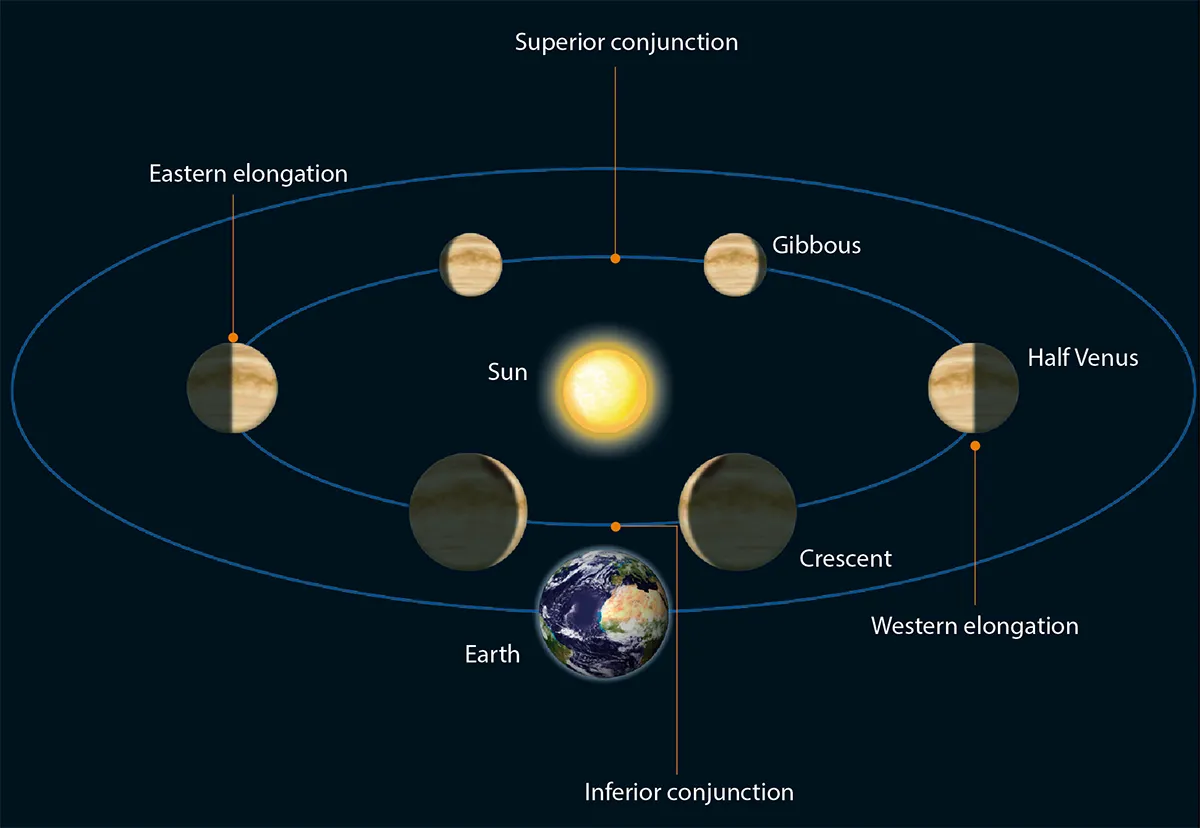In Harry Potter and the Order of the Phoenix, the fifth-year wizarding pupils are required to observe the planet Venus very late at night – some time around midnight – as part of their Astronomy OWL (Ordinary Wizarding Level) exam.
Author JK Rowling got some teasing about this. As almost any astronomer will gleefully tell you, it is simply not possible to see Venus at that sort of time of night.
Venus, after all, is normally called the 'morning star' or the 'evening star'.
However, it is possible to see Venus at midnight, under the right conditions.
The photograph at the top of this article was taken by me in Galloway, southwest Scotland, at 00:02 GMT - 'true' midnight - on 1 June 2023.

Venus is a so-called ‘inferior’ planet. There is nothing wrong with the planet as such, of course: the phrase simply means that its orbit around the Sun lies inside that of Earth’s orbit.
In other words, Venus can never be further away from the Sun than our own planet – so it stands to reason that anyone on the ‘midnight’ side of Earth cannot possibly see Venus: they’re facing completely the wrong direction.
The truth, however, is that you don’t have to be a wizard in order to see Venus at midnight. In very special circumstances, the planet is indeed visible to ordinary non-magical folk in the late night sky.
Observing Venus at midnight
The first requirement for observing Venus near midnight GMT is that observers have a clear view towards a low-lying horizon. From the top levels of the Hogwarts Astronomy Tower, pupil wizards would probably have such a vista.
Looking westwards out to sea or down a loch as Harry Potter might have done would certainly help. Mountains would get in the way, but it’s entirely possible to see Venus at midnight when standing on relatively flat ground.
Next, Venus should be at or near its greatest eastern elongation, as it was in early June 2023.
This means that when it is an evening object Venus appears to be as far away eastwards from the Sun as possible, so that it sets long after the Sun has dipped below the horizon.
Also, it helps if the observer is as far west within their own time zone as possible. In a sense, this is a bit of a cheat, because being west of the Greenwich meridian, for example, means you’re not at ‘local midnight’ yet, but instead positioned just behind it, chronologically speaking.
Being west of the relevant meridian for the local time zone means that you are effectively lagging behind your clock’s ‘midnight’.
We don’t know where Hogwarts actually is, but if we take as a close approximation the famous Glenfinnan railway viaduct (often seen in the Harry Potter movies as the Hogwarts Express makes its way to the school), we find that it lies some 5.5 degrees west of Greenwich.
Put it another way, it lags behind ‘clock’ midnight by some 20 minutes.

Having said that, it can still be possible to see Venus even at the 0-degree prime meridian, but it’s easier to be further to the west.
To see Venus as a rising object at or just after midnight, then the observer should be as far east within their time zone as possible and Venus should be at its greatest western elongation from the Sun.
The next important requirement is that the observer should be as far north as possible during the middle of the year.
Scotland, where Hogwarts is located, is just fine, and assuming that Hogwarts exam time is from mid-spring onwards, then Harry shouldn’t have had too much difficulty spotting Venus.
Being further north means that the plane of Venus’s orbit is at a more shallow angle to the observer’s horizon.
The principle is the same as for the setting Sun, which plunges almost straight down below the horizon in equatorial or tropical regions of Earth, quickly turning the sky dark; but in a Scottish summer, our star barely dips below the horizon, leaving the sky dark blue rather than truly black.
What matters next is our own atmosphere, which acts like a giant lens.
When we see the setting Sun just touching the horizon, the truth is that it is actually just below the horizon.

But our planet’s atmosphere refracts light from the Sun, making it appear as though it has not yet quite set – and often giving the Sun a slightly squished appearance.
The same is true for Venus and indeed other celestial objects. Over the years astronomers have had to make adjustments in their tables and smartphone apps to adjust for the refraction effect which means that objects low in the sky are not exactly where they appear to be.
In summary, then, if Venus is visibly far away from the Sun, and the observer is northwards and west within their time zone, then the atmosphere effectively pulls Venus back above the horizon.
While it seems to defy our intuitive understanding of planetary orbits and the daily rotation of the Earth, it is indeed entirely possible to see Venus at midnight.

